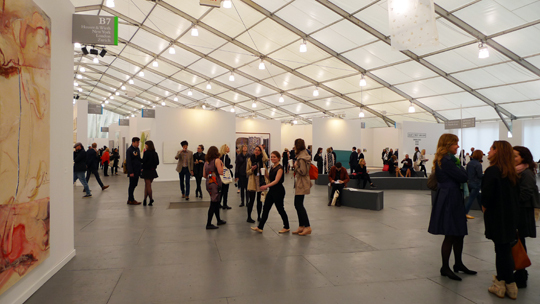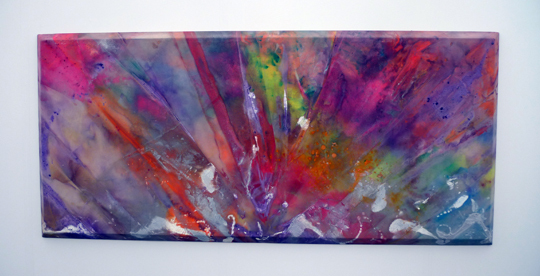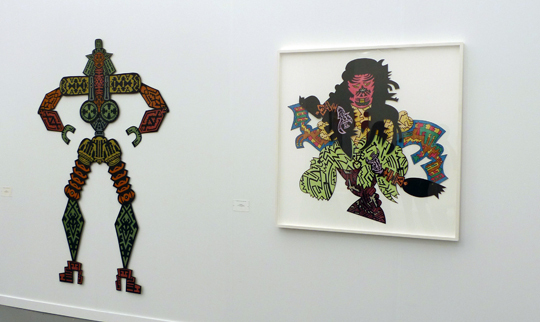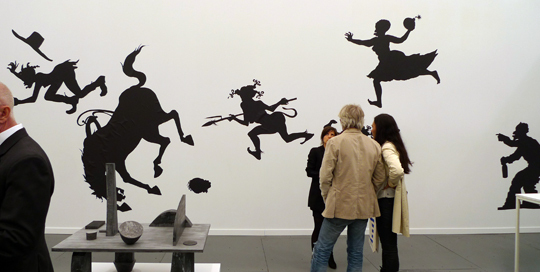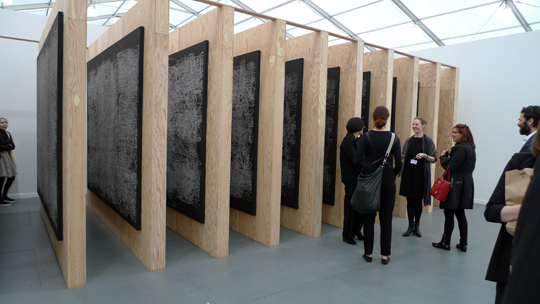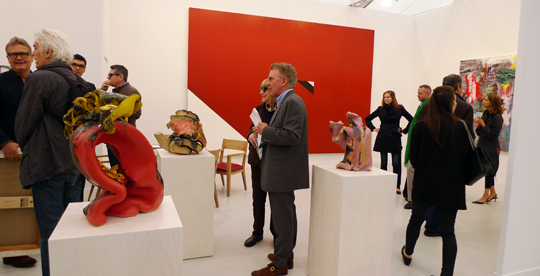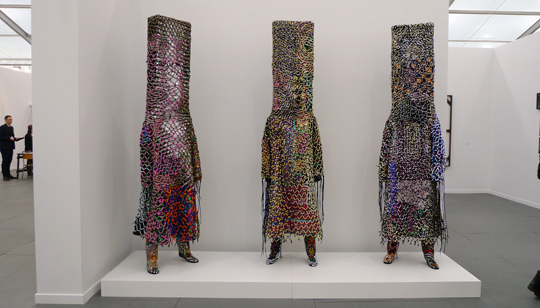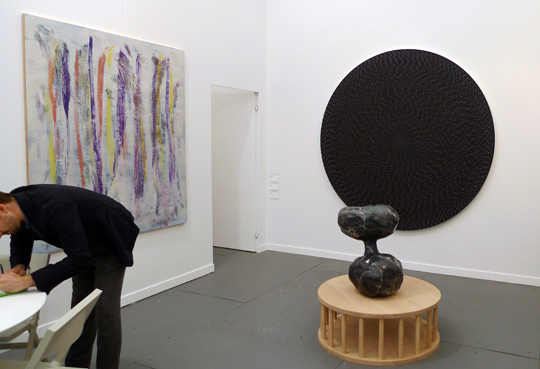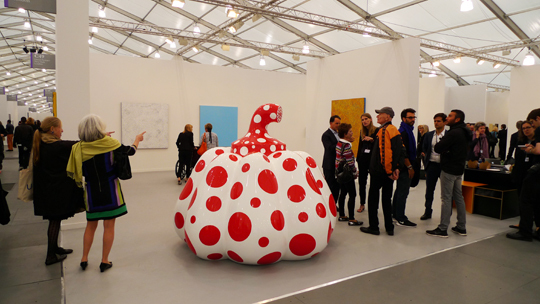The Frieze Fair in New York City is a beautiful, controlled presentation in a luminous tent on an island just off Manhattan.
The art is top-notch, which means exclusive, blue-chip and expensive. What's nice about the show is that there's a local component to much art that sold in the world, in that a gallery from São Paulo can bring high-end art that is still unfamiliar to a North American audience.
Unlike other major fairs, like Art Basel Miami Beach, where most booths are filled with requisite major names like Lichtenstein, Warhol and Viola, I experienced lots of strong art that was completely new to me. There's also an emphasis at Frieze to show work that has not been previously exhibited, though some galleries were revisiting significant, but underexposed art from decades past, like Sam Gilliam's seminal beveled canvases, and Karl Wirsum's fresh Imagist work, from the '70s.
Everyone at the fair has an agenda. The galleries want to sell. I want to line up new experts from my Klein Artist Works course which begins anew in a month. Others are looking for art that's new to them, or want to buy the piece in person that they've only previously seen in an email, or art consultants looking for work for a client, or curators seeking art that fits the theme of the show on which they are working, and on and on.
Art fairs have become the town centers of the art world, where people flock because this is where art commerce happens. But it does place a priority on exactly that -- commerce. And that is changing the art world; stretching it Q-tip thin with bulbous activity at both ends, but a sense of irrelevance in the middle. Not healthy.
Yes, many collectors seek a holistic, impassioned relationship with the art they love, and the artists who inspire them, yet others will purchase art they've been advised to acquire and hope to appreciate it before they try to sell it for a profit.
Money plays big here. It's beautiful, airy, delightful, showy, ostentatious, perplexing and unctuous, kind of like looking over the fence of the country club and wishing you were inside -- before realizing what you really wish for is that those on the inside would come out with their enthusiasm, commitment and ostentatious wealth and engage with the rank and file artists and people who are moving the substance of art forward.
